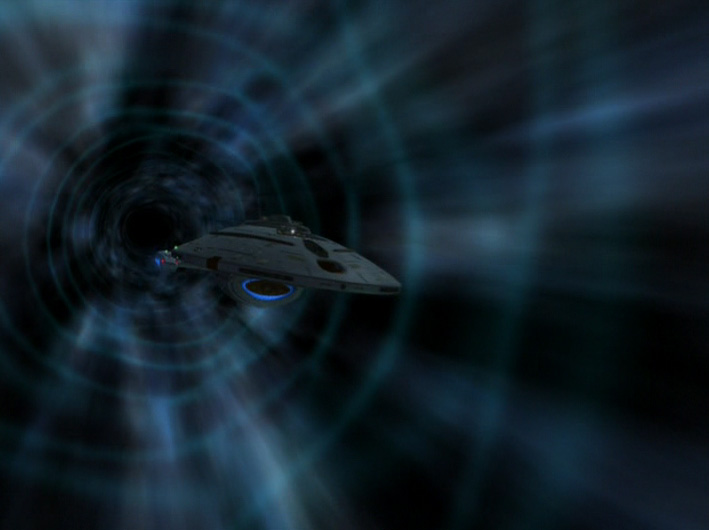Experimental Technology: Quantum Slipstream Drive
Created by Captain Anthony Watson on Thu Jul 30th, 2015 @ 10:21am
 |
 |
The Quantum Slipstream Drive (also referred to as Slipstream Drive or just Slipstream) is an advanced form of propulsion originally developed by "Species 116" in the Delta Quadrant. It is capable of exceeding a starship's maximum warp factor by an unprecedented degree.
History
The crew of the USS Voyager first acquired the technology in 2374 from Species 116 during its journey through the Delta Quadrant. They managed to temporarily employ the technology aboard Voyager before the slipstream collapsed. (VOY: "Hope and Fear"). After considerable review and modification, the Voyager crew developed their own quantum slipstream drive which they tested a year later in 2375. This nearly led to the destruction of Voyager and it was decided to put the use of the device on hold indefinitely. (VOY: "Timeless").
Starfleet engineers and researchers continued to work with the technology following Voyager's return to the Alpha Quadrant in 2378. Their efforts were largely unsuccessful until a major breakthrough in understanding the relationship between slipstream corridors and the physical geometry of the vessel. By 2391, the Starfleet Corps of Engineers had deployed this new drive system aboard a handful of Gryphon-class runabouts for the purpose of field-testing. One such runabout, the Zephyr, was assigned to the Galaxy-class USS Magellan following her upgrade to Mark III specifications.
Technical Data
The quantum slipstream drive operates by routing energy through a vessel's main deflector, which then focuses a quantum field and allows the vessel to penetrate the quantum barrier. In order to maintain the slipstream, the phase variance of the quantum field must be constantly adjusted or the slipstream will collapse, violently throwing the ship back into normal space. (VOY: "Hope and Fear").
Generating slipstream corridors requires more power than forming warp fields. The power required is directly related to the frontal geometry of a vessel and lesser to the ship geometry. Therefore, vessels equipped with quantum slipstream drives are generally narrow and compact with more aerodynamic lines.
It has been noted the quantum slipstream drive shares a similar principle to that of Borg transwarp technology.
Travel Time Comparison
The table below demonstrates estimated comparative travel times between the Conventional Warp Drive (at Warp 9.8) used aboard the Galaxy-class Mark III USS Magellan and the experimental Quantum Slipstream Drive Mark I deployed aboard the Gryphon-class Zephyr.
| Conventional Warp Drive (9.8) | Distance Traveled | Quantum Slipstream Drive Mk I |
| 0.0006 days (52.92 seconds) | 0.0075 lightyears | 0.00001 days (1 second) |
| 0.037 days (52.92 minutes) | 0.45 lightyears | 0.00069 days (1 minute) |
| 2.21 days (52.92 hours) | 27 lightyears | 0.042 days (1 hour) |
| 58.32 days (58.32 days) | 714 lightyears | 1 day (1 day) |
| 408.4 days (58.34 weeks) | 5000 lightyears | 7 days (1 week) |
| 1633.5 days (53.67 months) | 20,000 lightyears | 30.42 days (1 month) |
Categories: Mission Information